Past Meetings (2025)
December 2024 (Holiday Party)
November 2024

Speaker:Kathleen Springer and Jeff Pigati
Position: Research Geologists, USGS Geosciences and Environmental Change Science Center in Denver, Colorado
Topic: Fossilized Human Footprints and Desert Wetlands Research in White Sands National Park
When: Monday, November 4, 2024
Speaker Bio:
Kathleen Springer is a research geologist with the U.S. Geological Survey in Denver, Colorado. She specializes in deciphering complex stratigraphic sequences and reconstructing paleoenvironmental conditions, and studies how springs and other hydrologic systems responded to climate change in the recent geologic past.
Jeff Pigati is a research geologist with the U.S. Geological Survey in Denver, Colorado. His research is focused on understanding the response of hydrologic systems in arid environments to past episodes of abrupt climate change. He is also an expert in radiocarbon dating.
Abstract:
Kathleen Springer and Jeff Pigati are research geologists with the U.S. Geological Survey’s Geosciences and Environmental Change Science Center in Denver, Colorado. They are co-PIs of the Quaternary Hydroclimate Records of Spring Ecosystems project in which they investigate geologic deposits associated with springs and desert wetlands to determine how these fragile ecosystems responded to past episodes of abrupt climate change. Their work has focused on developing stratigraphic and chronologic frameworks from paleowetland deposits throughout the Mojave Desert and southern Great Basin, which then serve as hydroclimate roadmaps for these ecosystems. They have established that spring and desert wetland ecosystems are incredibly sensitive to changes in climate at multi-decadal to centennial timescales and that they expanded and contracted in near lockstep with changes in climate recorded in the Greenland ice cores over the past 40,000 years. These sensitive groundwater dependent ecosystems allow them to evaluate the effects of abrupt warming events on terrestrial landscapes including Dansgaard-Oeschger (D-O) events, which are analogous to projected future warming in terms of their magnitude, timing, and sphere of influence. Notably, their results demonstrate that springs and wetlands in the southwestern U.S. contracted or disappeared altogether during D-O events due to rapid groundwater lowering associated with these megadrought episodes. Their findings have tremendous implications for extant springs in arid environments.
Their research is largely conducted on federal lands administered by the National Park Service, including Tule Springs Fossil Beds National Monument, Death Valley National Park, Joshua Tree National Park, Channel Islands National Park, and the Mojave National Preserve.
In White Sands National Park, Kathleen and Jeff have combined their region-wide experience with detailed stratigraphic analyses and cutting-edge dating techniques with their intimate understanding of past climate events to establish the age, geologic context, and paleoenvironmental setting of ancient human footprints recently discovered there – including the link to abrupt climate change that allowed the human and megafaunal footprints and trackways to be created and preserved. Archaeologists and researchers in allied fields have long sought to understand human colonization of North America. Questions remained about when and how people migrated, where they originated, and how their arrival affected the established fauna and landscape. evidence from excavated surfaces in White Sands National Park (New Mexico, United States), where multiple in situ human footprints are stratigraphically constrained and bracketed by seed layers that yield calibrated radiocarbon ages between ~23 and 21 thousand years ago. This timing coincided with a Northern Hemispheric abrupt warming event, Dansgaard-Oeschger event 2, which drew down lake levels and allowed humans and megafauna to walk on newly exposed surfaces, creating tracks that became preserved in the geologic record. These findings confirm the presence of humans in North America during the Last Glacial Maximum, adding evidence to the antiquity of human colonization of the Americas and providing a temporal range extension for the coexistence of early inhabitants and Pleistocene megafauna. Independent chronologic controls have confirmed the ages are correct and is the subject of our ongoing research. These results have upended traditional models regarding the peopling of the Americas and fundamentally change the very foundation of North American archaeology.
Quaternary Hydroclimate Records of Spring Ecosystems | U.S. Geological Survey
Fossilized Footprints – White Sands National Park (U.S. National Park Service)
Article Link: Evidence of humans in North America during the Last Glacial Maximum | Science
October 2024 (Field Trip)
September 2024

Speaker: Dr. Diane Clemens-Knott
Position: Professor Emerita, California State University, Fullerton
Topic: Using zircon geochemistry to reconstruct the pre-Cretaceous tectonic evolution of the southern Sierra Nevada arc.
When: Monday, September 9, 2024
Speaker Bio:
After earning her B. S. in geology at UCLA (go Bruins!), Diane’s geologic career began in a remote part of the southeastern Sierra Nevada in a trailer parked by a 6-foot-tall ice cream cone. There she helped complete the helicopter-assisted USGS mapping of the northern Kern Plateau just in time for the region to gain wilderness status. 25 years later she returned with CSUF students to study the Plateau’s Jurassic gabbros and their enigmatic metamorphic framework rocks. In between she completed her PhD at Caltech working in Visalia ranchlands of the western Sierra foothills mapping the roots of Early Cretaceous stratovolcanoes, still later migrating southward through the Sequoia groves of the Great Western Divide to explore the southwestern rift edge of the Laurentian continent.
During her 30 years at Cal State Fullerton (Go Titans!), Diane moved from Lecturer to Professor to Department Chair while teaching Geology of the National Parks, Isotope Geochemistry, and Ig/Met Petrology. Fully retired since 2021, this semester she’s returned to college full-time as a member of Fullerton College’s women’s golf team (Go Hornets!).
Abstract:
Permian-to-Cretaceous igneous rocks of the Sierra Nevada Mountains were generated by almost 180 million years of oceanic plate subduction beneath the western edge of the North American continent. Tomographic imaging of the mantle beneath the southern Sierra Nevada reveals the presence of multiple oceanic slabs that implicates a complex history of Mesozoic continental collision, slab break-off, and crustal extension. This talk will explore the Permian-through-Jurassic tectonic evolution of southwestern Laurentia by integrating four different aspects of zircon geochemistry with field-based geology.
August 2024

Speaker: Dr. Roy Shlemon
Topic: Locating Active (Holocene) Faults in the City of Beverly Hills, California (USA).
When: Monday, August 5, 2024
Speaker Bio:
Roy J. Shlemon has been a consulting geologist for the past ~65 years. He resides in Newport Beach, and focuses mainly on application of geomorphology, Quaternary geology and soil stratigraphy to engineering practice. Dr. Shlemon received his doctorate from the University of California at Berkeley and was on the faculty of the University of California at Davis and the Louisiana State University in Baton Rouge. He has also lectured and given short courses Stanford, UCLA and various California State Universities. Dr. Shlemon is also an active member of a myriad of academic and professional organizations including the South Coast Geological Society. His specialty practice has taken him around the world as a consultant and technical advisor for geoarchaeological investigations, for fault-activity and mass-movement assessments, for related engineering-geological applications for construction of large dams, nuclear power and related waste facilities, and for residential and commercial developments. He has also serves as a technical consultant and expert witness for legal entities; and as a Technical Reviewer/Advisor for federal and local government agencies.
Abstract:
The Santa Monica fault zone (SMFZ) extends across much of the densely populated City of Beverly Hills in southern California. State and local agencies require that active (Holocene) splays of the SMFZ be located and avoided (structural setbacks) prior to new construction. Accordingly, based on interpretation of ~80-100 m deep continuous cores, on arrays of cone-penetrometer tests (CPT), on limited geophysical data, on local street trenching, and on downhole logging of up to 15-m deep, overlapping bucket-auger holes, the ~300-m wide SMFZ is now documented to impact at least several famous, multi-million-dollar commercial structures in the “heart” of the Beverly Hills business district (Rodeo Drive). Subsurface sediment correlation is typically deduced from interpretation of 3-m centered continuous cores and cone penetrometer test (CPT) soundings. Sediment age is preferably based on multiple radiocarbon or OSL (optically stimulated luminescence) dates; but, in the common absence of such, soil-stratigraphic dating techniques are generally used.
Vertical fault displacement of a few cm may not be recognized owing to lack of slickensides on near-surface sediments and to 0.5-1.0 m-deep local channel incision. Where logistically feasible trenches may be excavated beneath existing structures in order to expose and measure possible fault offset and sediment age. The depth to the local Pleistocene/Holocene boundary varies, but – based mainly on radiocarbon and soil-stratigraphic dating – locally occurs between ~ 6-8 m, typically too deep for urban trench exposure. Increasingly, therefore, consultants drill 20-30, overlapping, 0.8 m diameter bucket-auger holes, which, when cleaned and logged, emulate trench walls. Such drilling is particularly expensive in cities and is typically done at night to reduce disruption to traffic and commercial activities. Coupled with difficulties of locating and avoiding unmarked utility lines and with required State and City technical reviews and permits, investigating the possible presence and impact of active faults on a single Beverly Hills commercial building may take over a year and exceed a million dollars.
Key words: urban active faults; investigation techniques; Beverly Hills, California
July 2024 (Virtual)
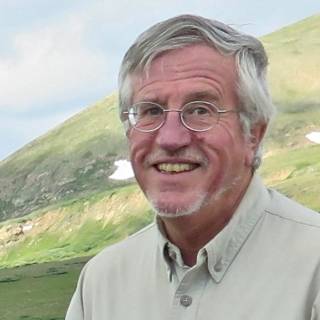
Speaker: Dr. Fred Phillips
Position: Emeritus Professor of Hydrology, New Mexico Institute of Mining and Technology
Topic: Glacial Chronology of the Sierra Nevada
When: Monday, July 1, 2024
Speaker Bio:
Fred Phillips is Professor Emeritus of Hydrology in the Department of Earth and Environmental Science at New Mexico Institute of Mining and Technology in Socorro, New Mexico. He received his undergraduate degree in Earth Science from the University of California at Santa Cruz and M.S. and Ph.D. in Hydrology from the University of Arizona, the last in 1981. He played a significant role in the development of surface exposure dating using cosmogenic nuclides. He has published numerous articles on the Quaternary geology of the Sierra Nevada and adjoining Great Basin. He has received the F.W. Clarke Medal from the Geochemical Society, the Kirk Bryan Award from the QG&G Division of the Geological Society of America, and the O.E. Meinzer Award from the Hydrogeology Division of the GSA.
Abstract:
The Sierra Nevada has played an important role in the history of paleoglaciology in the United States, and indeed globally. The role of glaciation in shaping the range was discussed by J.D. Whitney, John Muir, and Joseph LeConte in the late 1860’s and the 1870’s. Even at this early time, the evidence was abundant that the Sierra Nevada had been extensively glaciated in the not-too-distant geological past.
When Elliot Blackwelder in 1931 provided the first comprehensive description of the glacial history of the Sierra Nevada he recognized four glacial stages. This was not because of widespread evidence for four advances, rather, it was because four stages were required by the prevailing paleoclimatic theory of his day. In fact, while there is abundant evidence of the two most recent advances, that for Blackwelder’s two older stages is exceedingly fragmentary. Blackwelder named the penultimate and the most recent glacial stages the ‘Tahoe’ and the ‘Tioga’, respectively. Today, chronology provided mainly by cosmogenic nuclide accumulation dating, but supplemented by other methods, has demonstrated that the Tahoe is contemporaneous with the global glacial maximum of Marine Isotope Stage (MIS) 6 (~140 ka) and the Tioga with the maximum of MIS 2 (~20 ka). Given that the severity of preceding glacial stages in the marine isotope record is very similar to these two stages, it seems highly likely that the Sierra Nevada over the past million years has undergone multiple glaciations of similar magnitude to the Tahoe and Tioga. This is at least partially confirmed by geochemical evidence from a core in Owens Lake sediments that extends back to ~800 ka. It shows multiple cycles of wet conditions very similar to the Tahoe and Tioga and dry conditions similar to the Holocene. These cycles follow the same chronology as the Marine Isotope Stages.
The history of the deglaciation of the Sierra Nevada at the end of MIS 2 can be reconstructed in considerable detail, unlike previous advances and retreats for which the evidence has been destroyed by subsequent glacial erosion. The evidence indicates that the glaciers reached a position close to that of the terminal moraine by 26 ka, well before the global Last Glacial Maximum at about 20 ka. The terminal position was occupied from about 21 to 19 ka. Between 19 and 16.7 ka the glaciers retreated far back in the range. Between 16.7 and 16.2 ka they readvanced, eventually reaching about one-third of the glacial maximum extent. At 16.2 ka they retreated very rapidly, deglaciating the Sierra Nevada, except perhaps for a few very small cirque glaciers. There is no indication of subsequent glacial expansion until the diminutive Recess Peak advance between 14.0 and 12.5 ka. Whether this coincided with the quasi-global Younger Dryas event (12.9-11.6 ka) is uncertain.
During the early Holocene, even the tiny cirque glaciers apparently disappeared. These re-formed at about 3 ka and advanced until the termination of the Little Ice Age at the end of the Nineteenth Century. Today they are rapidly disappearing as Global Warming renders the Sierra Nevada unsuitable for glaciers.
June 2024
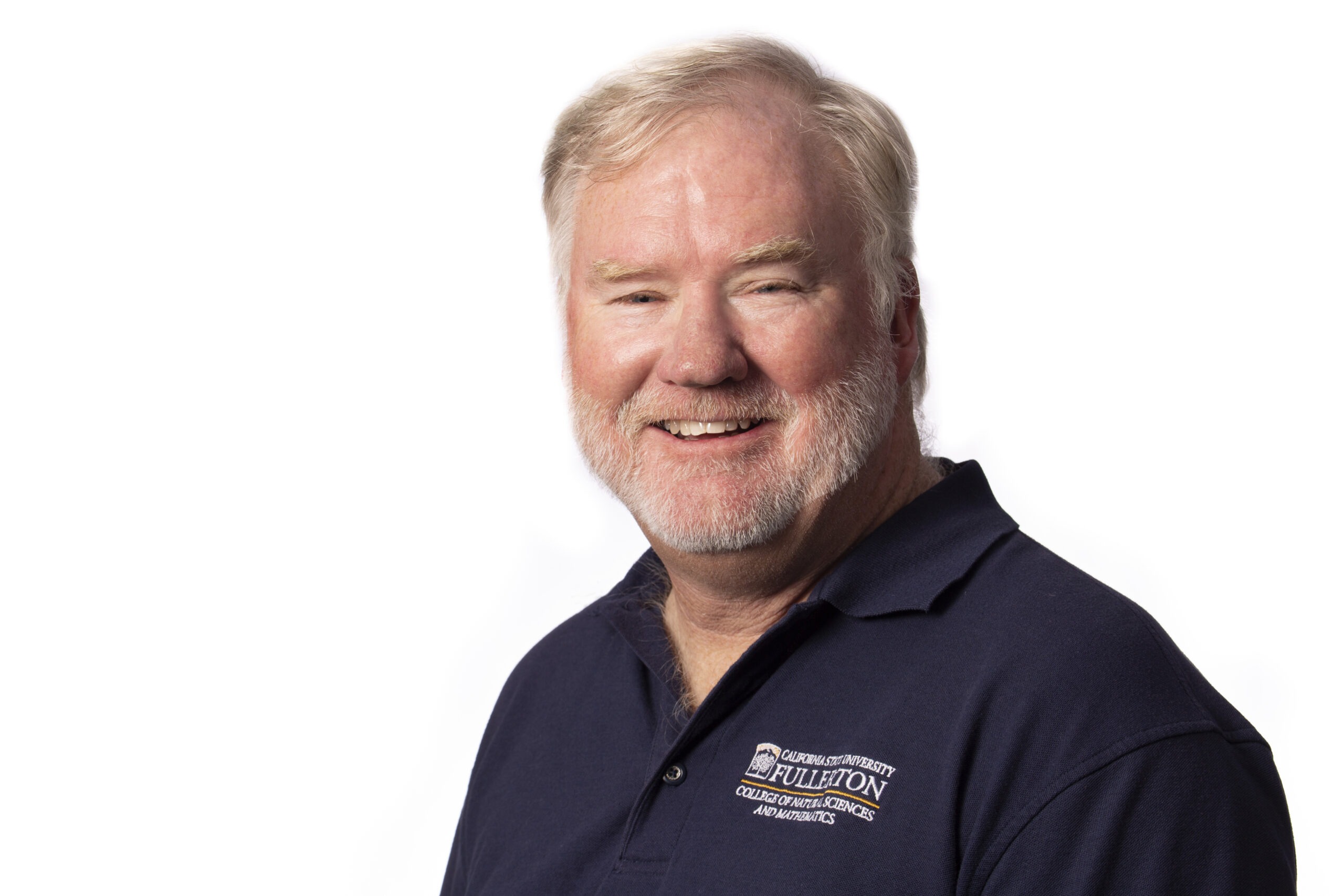
Annual Joint Meeting with SDAG
When: Monday, June 17, 2024
WHAT AN EXCITING MEETING ON MONDAY!!
For those of you who missed the joint SCGS/SDAG meeting on June 17 at El Adobe, before the meeting, we found out that our scheduled speaker, Dr. Sue Hough, was somewhere in the 7th circle of LAX and would not arrive in time for the meeting. I had an inkling of this possibility and had prepared an emergency presentation.
So…we had a presentation. Crisis was avoided. We innocently asked the El Adobe people, “Where is the projector?” To our surprise, they said, “We used to have one, but it was damaged in the rain and we never replaced it.” That little bit of information would have been good to know earlier…2nd exciting moment of the evening. Fortunately, John Teasley, SDAG President, rode to the rescue. Before the meeting, he put a projector into his car…he just had a feeling. Thank you John – you saved the day.
In the end, the 74 people in attendance heard a presentation on the tephrochronology of the Monterey and Modelo Formations. Many of the samples were collected during grading operations here in Orange County. Hopefully, not too many people were disappointed and we will try and get Sue Hough at a future meeting to tell us about the Northridge earthquake.
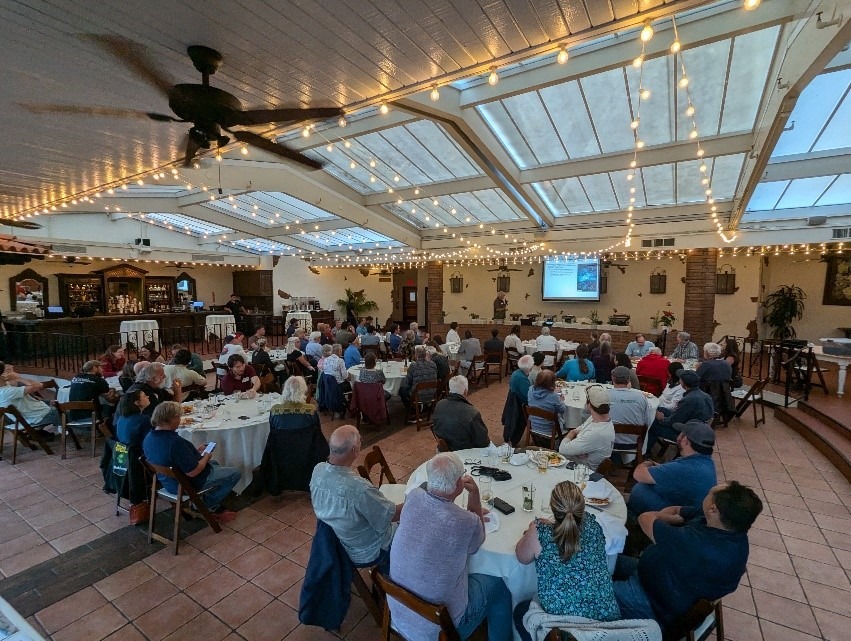
May 2024
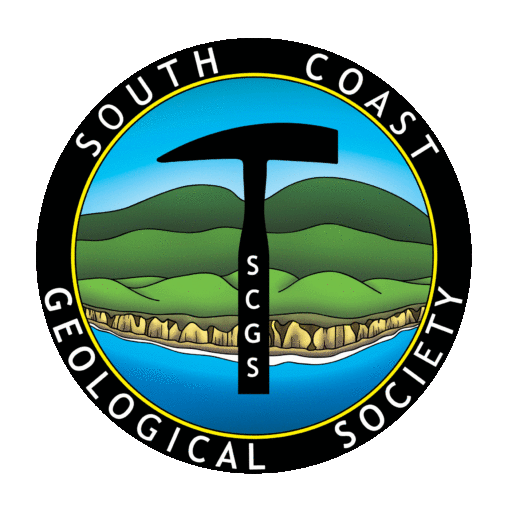
Annual SCGS Poster Session
When: Monday, May 6, 2024
Burgess, Jarrod (CSUF – Undergraduate)
“Desktop Application to Manage and Store Detrital Zircon Geochronological Data in a SQL Database”
Camargo-Ramirez, Joana (CSUF)
“Ties in Age and Provenance of the Eastern Hayfork and North Fork Terranes and Their Relationship to the Western Margin of North America”
Cooper, Spencer (CSULB – Graduate)
“Uplift Rates in the Western Transverse Range”
Cugini, Brandon (CSUF – Graduate)
“Using geologic mapping and other tools to investigate emplacement mechanisms in the Jackass Lakes Pluton of the Sierra Nevada, CA”
Dunn, Samantha (CSUF – Graduate)
“Petrologic and geochemical links in the Jackass Lakes volcanic-plutonic complex, Sierra Nevada batholith”
Durning, Sadie (CSUF – Graduate)
“Hot or Cold Storage: Using Thermometry and Chemometry in K-Feldspar Megacryst Mineral Inclusions to Determine Magma Chamber Conditions”
Gath, Eldon (Earth Consultants International – Professional)
“Uplift and Neotectonic Development of the Puente Hills, Los Angeles, Riverside and Orange Counties, Southern California”
Kawasaki, Jinka (CSUF – Graduate)
“Are Man-made Glass Beads better than Silica Sand as Filter Packs in Water Wells?”
Knott, Jeff (CSUF – Professor)
“Tephrochronology of the Monterey and Modelo Formations, California”
Leeper, Robert (Mt. San Antonio College – Professor)
“Mt. San Antonio College Geotechnician Certificate Program”
McMichael, Ryan (CSUF – Undergraduate)
“Unveiling the Secrets of Marine Terrace Rings: A Window into Paleoenvironmental Change and Ecological Shifts”
Munoz, Jonathan (CSUF – Undergraduate)
“Uncovering Hidden Influence: Unconventional Non-Demographic Variables Shape Success and Close Educational Gaps in Introductory Geology”
Onderdonk, Nate (CSULB – Professor)
“Paleomagnetic directions and Argon dating of Miocene rocks show unusually rapid vertical-axis rotation on Santa Catalina Island, offshore southern California“
Ortega, Sonny (CSUF – Undergraduate)
“Assessing the role of wood fragments in the formation of calcite concretions of the Late Cretaceous Holz Shale, Santa Ana Mountains“
Ruiz, Roberto (CSUF – Undergraduate)
“Rancho Mission Viejo Riding Park Recharge System“
Scandore, Alex (CSULB – Undergraduate)
“Alteration and hydrothermal fluid provenance in the Lima Segment of the Peruvian Coastal Batholith”
Walters, Polito (CSULB)
“Hydrothermal Alteration Related to the Brittle-Ductile Transition at the Sierra Crest Shear Zone, Eastern Sierra Nevada, California”
Wilkins, Shaun (Langan – Professional)
“500-foot Slip or Slide”
Woodard, Brennen (CSUF – Undergraduate)
“The Requirements for Constructing a Favorable Recharge Well in San Juan Capistrano, California”
April 2024

Speaker: Scott Rugg
Position: Senior Engineering Geologist, Kleinfelder
Topic: Factors Affecting the Interpretation of Faulting in Cone Penetrometer Test Sounding Investigations
When: Monday, April 1, 2024
Speaker Bio:
Mr. Rugg has 38 years of experience in the fields of engineering geology and geotechnical engineering, having worked on thousands of sites throughout California and the Southwest. He has focused his vocation on fault and seismic hazard assessment, having worked extensively on all types of projects including high-rise buildings, hospitals, water and wastewater treatment plants, airports, dams, transportation, education facilities, and residential sites. Early in his career he evaluated hundreds of sites damaged during the 1986 Palm Springs, 1987 Whittier Narrows, 1989 Loma Prieta, and 1994 Northridge earthquakes. A sampling of fault hazard projects he has led are the Master-plan Investigation of San Diego International Airport, San Diego, CA, – Mid-Coast Trolley Extension, San Diego, CA, – Airfield Expansion, Naval Weapons Station, China Lake, CA, – Biosolids and Clarifiers Replacement, Orange County Sanitation District, Huntington Beach, CA – Exxon Mobil Carbon Capture Facility, Baytown, Tx – Camp Blaz Satellite Facility, US Territory Guam, and the Automated People Mover, Inglewood, CA. . He has proficiency in all methods of fault investigation with extensive experience in the use of Cone Penetrometer Test Soundings for fault hazard analysis.
Abstract:
Cone Penetrometer Test (CPT) soundings are an often-used method to characterize subsurface soil behavior properties mostly in soft material conditions. The method has many geotechnical applications, some of which include liquefaction analysis, mapping of alluvial deposits and fill, evaluation of soil density improvement and determination of seismic S- and P-wave velocities. When a series of CPTs is advanced, the subsurface stratigraphy can be profiled. This was recognized early on and soon CPTs were engaged to identify stratigraphic disruptions indicative of faulting. This method is now widely used in the coastal province of Southern California, mostly in upper Quaternary materials. Oftentimes, only several feet or less of vertical differential across unit horizons or thickness variations in strata are used to identify potential faulting. This means it is imperative that depth recording of CPTs are as accurate as possible.
Several factors can cause errors in depth readings, leading to erroneous interpretations of faulting. These factors will be discussed in this presentation as well as a quality control procedure to track actual depths and thus mitigate errors. In addition, several examples will be presented where inaccurate depth readings resulted in misinterpretation of faulting. Finally, both the advantages and limitations of the CPT method will be discussed.
March 2025

Speaker: Paul Parmentier
Position: former SCGS President; Retired Hydrogeologist
Topic: : Unique geology sites and features in New Mexico.
When: Monday, March 3, 2025
Speaker Bio:
Paul Parmentier, former SCGS President (East Mojave Field Trip) , retired in New Mexico after 5 years of geothermal exploration and 30 years of environmental geology.
Abstract:
New Mexico offers spectacular geology sites such as mesas, volcanic necks, arches, and gorges, but Paul, after presenting four regional geology features of the state, will focus on geologic sites unique to New Mexico including two subsurface atomic explosion experiments, a large magma body, an actively produced CO2 field, and special geology of the Permian Basin and its evaporites.
February 2025
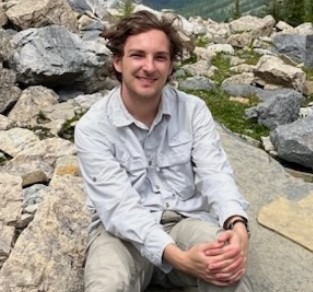
Speaker: Patrick Phelps
Position: Assistant Professor of Geology at California State University, Fullerton
Topic: Lithium Landscapes: Geology, Technology, and the Road Ahead.
When: Monday, February 3, 2025
Speaker Bio:
Patrick Phelps is an Assistant Professor of Geology at California State University, Fullerton. He received undergraduate degrees in Physics and Geosciences from the University of Tulsa in Oklahoma and a PhD in Earth Science from Rice University in Texas. With research interests in economic geology and volcanology, he studies how various ore deposits form including hard rock lithium deposits.
Abstract:
Lithium: the hot metal everyone can’t get enough of. With the push for increased electrification, the world needs more electrical storage (batteries) requiring more and more lithium. Found all over the earth, lithium is ultimately derived from two geological sources: brines and hard rock pegmatites. Rarely forming in minerals, this metal is often concentrated only in the final stages of magmas. As our need for lithium grows, we will need to exploit new sources: some well known but uneconomical and some yet to be discovered. This talk will serve as an overview of the geology of lithium deposits while explaining why we find lithium where we do. We will also explore the global lithium market, the future the US and California may play in it, and how upcoming technologies may completely change how we approach lithium resources.
January 2024
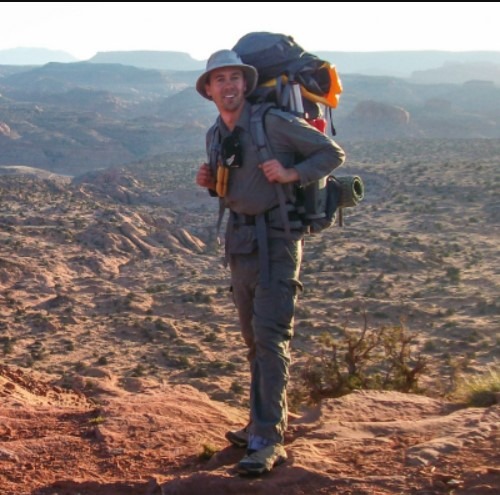
Speaker: Nicholas Barth
Position: Associate Professor of Geology at University of California, Riverside
Topic: Someone Else’s Fault! – An Introduction to New Zealand’s Alpine Fault.
When: Monday, January 6, 2025
Speaker Bio:
Nicolas Barth is an Associate Professor of Geology at the University of California, Riverside. He received a BSc & MSc in Geology at UC Santa Barbara and a PhD at the University of Otago in New Zealand. Among diverse research interests, his main aim is to improve our understanding of active faults and the evolution of landscapes.
Abstract:
This talk provided a whirlwind tour of the Alpine Fault in New Zealand, often considered one of the world’s “big three” active continental strike-slip fault systems (alongside Turkey’s North Anatolian and the San Andreas). The fast slip rate (∼30 mm/yr), regular recurrence interval (249 ± 58 yr), and time of last earthquake (1717 CE) yield a 75% probability of Alpine Fault surface rupture in the next 50 years, making this one of the world’s most anticipated earthquakes and distinct national-level hazards. The race is on for scientists to learn what they can and communicate it into actionable policy and planning before this earthquake strikes. This talk will provide an overview of our state of knowledge, including the most spatiotemporally complete paleoearthquake record in the world and new lidar-revealed insights into earthquake displacements, slip rates, uplift rates, and landscape effects. A spotlight will be placed on a recent study that used curved scratches (slickenlines) on fault surfaces to constrain the rupture locations of past Alpine Fault earthquakes, demonstrating the utility of a brand new paleoseismological tool applicable to surface-rupturing faults globally.
